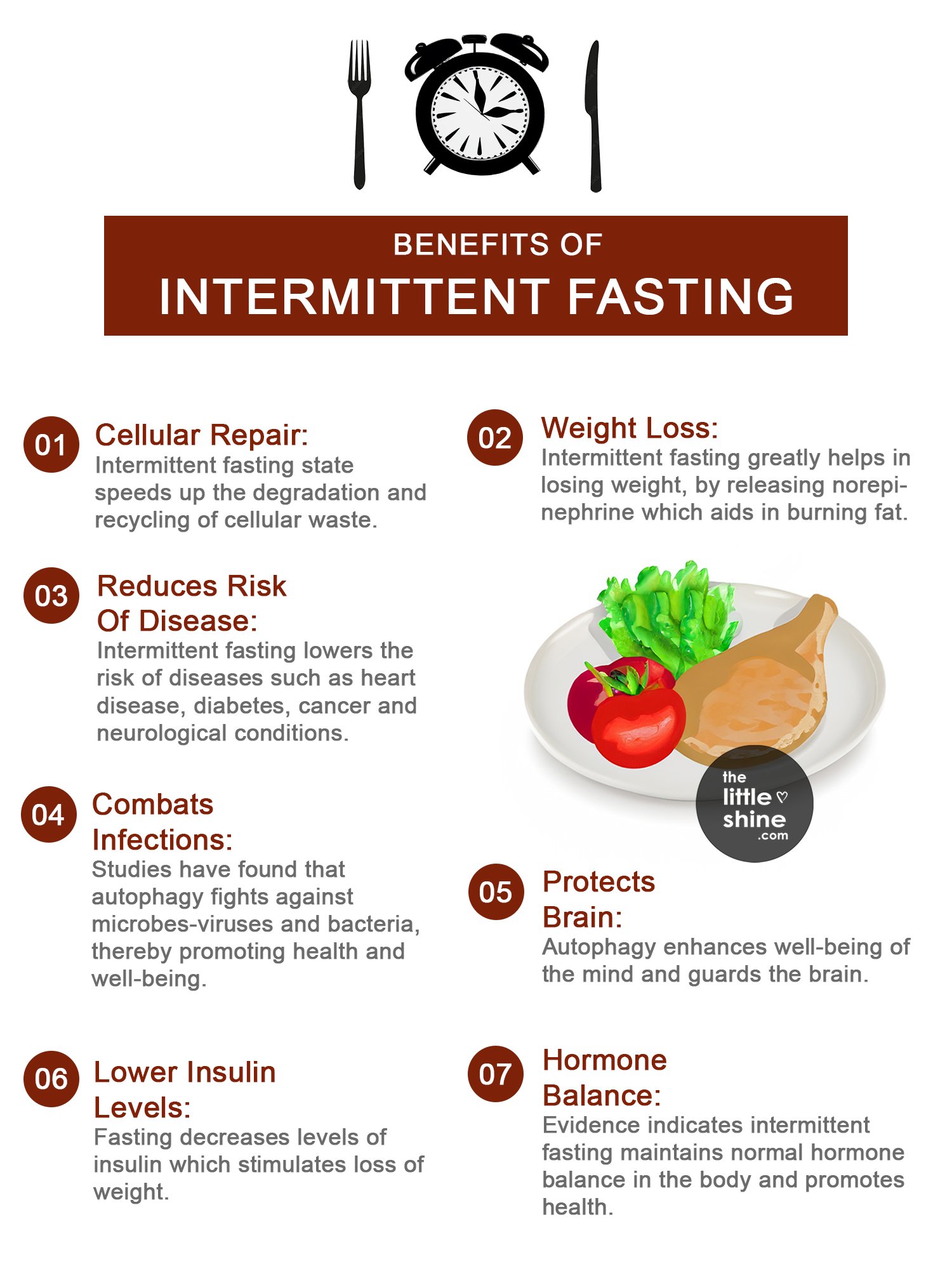I’m sure you’ve heard the word “intermittent fasting” before, because of all the hype. But what is actually? Is it worth all the hype it gets? Does it work?

Well, I’m sure most of you must be having a lot of unanswered questions in your minds and we’re here to lay all those unanswered questions to rest!
Check out all the details about what intermittent fasting is, how it’s done, its benefits and more, right here in this article!
What is Intermittent Fasting?
Intermittent fasting is mainly making a change in the pattern of eating. It involves a cycle between periods of eating and periods where you fast.
Benefits of Intermittent Fasting
1. May help in loss of fat and keep weight in check
Intermittent fasting can help keep weight in check. It can enhance the functioning of your hormones to promote weight loss. It also may help in loss of fat in some cases, while it maintains muscle mass.
2. May improve memory and cognitive functioning
Intermittent fasting may help boost memory and cognitive functioning in some cases.
3. Can increase body metabolism
Intermittent fasting can help boost body metabolism. The body turns its fat into energy.
4. It can reduce the resistance to insulin
Intermittent fasting can help reduce insulin resistance and can help lower blood sugar levels and protect the body from type 2 diabetes.
5. Can reduce inflammation and oxidative stress in the body
Oxidative stress can lead to ageing and chronic diseases. Intermittent fasting can help the body enhance its resistance towards oxidative stress. It can also help fight inflammation in the body.
6. Good for heart health
Intermittent fasting can help heart health in many/multiple ways. It can help keep blood sugar levels, blood pressure and blood triglycerides in check. It can also help reduce the LDL or bad cholesterol in the body.
How to do Intermittent Fasting?
There are different types of intermittent fasting cycles you can choose from. Here are some of the common types:
- 16/8 – This means 16 hours of fasting time (where only water is permitted), while during the remaining 8 hours, you can consume your foods and beverages as usual.
- 5:2 – This means you fast (meaning you intake minimal calories) two out of the seven days in a week. On the fasting days, you can only in take 500 to 600 calories.
- OMAD (One Meal A Day) – This means that you can only eat one nutrient-dense and high-calorie meal in a day, while the rest of the day, you only consume water or zero calories.
- Alternate Day Fasting (ADF) – This means you eat all your meals as usual on alternate days and on your “fast” days you need to reduce your calorie intake to only 30% of a usual day.
- Eat-Stop-Eat (ESE) Fasting – This type of intermittent fasting is a 24-hour fast, wherein you can consume very minimal calories on your fast days (just water, sugar-free and low-calorie fruit juices and fruits with almost-zero calories), done once or twice a week.
Apart from these, there are other types of intermittent fasting methods to consider as well, like partial fasting, water fasting, juice fasting and more., wherein you choose a stipulated day or hours in a day where you will restrict your food/calorie intake and only consume minimal calorie foods, juices or just plain water during those hours/days.
Caution: Before you begin any fast, make sure to talk to a medical professional, especially if you are on prescription medications, pregnant or lactating. Fasting may not be for everyone and medical advice is always recommended.